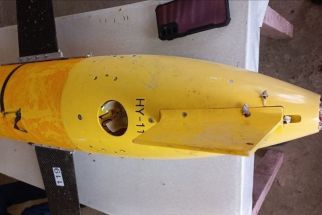Japanese experts in RP to jump-start Pagasa P500-M Doppler project
MANILA, Philippines – A team of experts from the Japan International Cooperation Agency (JICA) has arrived in the country to conduct basic design study to jumpstart the Japanese government’s P500-million Doppler radar project with the Philippine Atmospheric, Geophysical and Astronomical Services Administration (Pagasa).
Lawmakers earlier said Pagasa, which is under the Department of Science and Technology, might have been able to prevent the M/V Princess of the Stars tragedy had the agency immediately purchased and installed a Doppler radar.
The Princess of the Stars, carrying about 800 passengers and crew, capsized off Sibuyan Island in Romblon at the height of typhoon “Frank” last month.
The ship’s owner, Sulpicio Lines Inc., has sued Pagasa for alleged “inaccurate” weather reports which led to the capsizing of the vessel.
Prisco Nilo, director of Pagasa, said the Japanese experts would visit Aparri, Cagayan; Virac, Catanduanes; and Guiuan, eastern Samar, the sites of the three S-band radars that would be upgraded under the JICA-Pagasa project.
The Doppler radars are capable of generating short-term but highly accurate weather forecasts.
“They are here to collect data for the design of Doppler radars,” Nilo said.
Once in place, Nilo said the agency would be able to provide “faster and more accurate” weather updates. The Doppler radars would also allow them to issue advisory on rainfall volume and wind velocity.
Nilo said these are aside from the five Doppler radars being funded by the Philippine government under the 2005 and 2007 General Appropriations Acts and the 2007 calamity funds.
Nilo said 10 Doppler radars are to be installed in the country by 2010. However, he said 12 radars are needed to cover the entire archipelago.
He also explained that it would take two-and-a-half years before the upgraded radar systems would become fully operational from the date of formal signing, design, delivery and installation.
Science and Technology Secretary Estrella Alabastro, for her part, said she is very confident that by 2010 all of these radars would be in place.
Meantime, in a separate interview, Nilo said that despite the absence of Doppler radars, it is still possible to predict an incoming typhoon through the help of nature.
Nilo told reporters during the weekly Usapang Daungan at Danarra Hotel in Quezon City that when a typhoon is approaching, leeches float because they are sensitive to the low temperature of the atmosphere.
“When the temperature of the atmosphere drops, leeches will float,” Nilo said.
Aside from leeches, which are usually found in muddy waters, gamugamo (moths) are also harbingers of an incoming typhoon, Nilo said.
The behavior of animals was among the signs monitored by tribal folk in predicting natural disasters, added Nilo.
He cited that prior to the most recent eruptions of Mt. Mayon and Mt. Pinatubo, residents living near the two volcanoes reported snakes and reptiles racing down the mountainside.– With Perseus Echeminada
- Latest
- Trending































